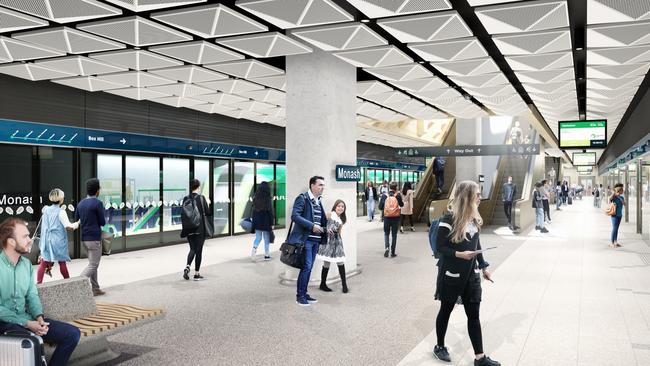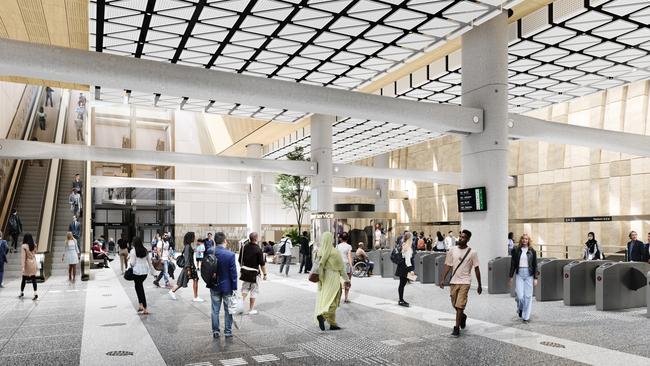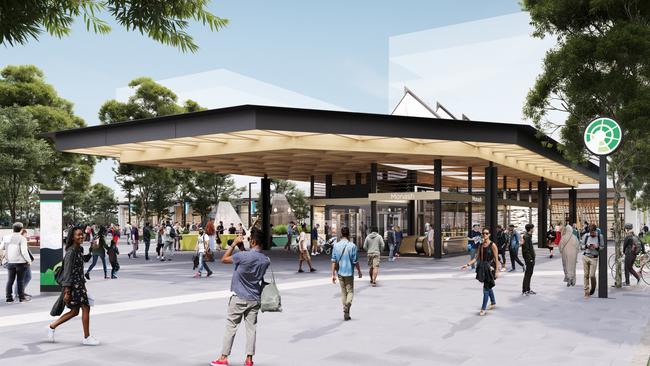How city’s Rail Loop will give suburbs a makeover
New pictures have revealed how future stations in Melbourne’s Suburban Rail Loop will transform the city’s suburbs.
Victoria
Don't miss out on the headlines from Victoria. Followed categories will be added to My News.
Newly released pictures have for the first time provided a glimpse of how the Suburban Rail Loop will transform Melbourne’s suburbs.
It comes as the state government will on Tuesday introduce new laws to parliament giving them greater planning powers around the project’s stations.
Designs drawn up for a future station at Monash University’s campus in Melbourne’s east have shown how new jobs and activity centres will be created above the undergerground railway line.
Large open public spaces feature heavily around the area, while nearby higher-density apartments and offices will provide suburban hubs that relieve pressure on the CBD.

Last month, it was revealed the first stage of the project from Cheltenham to Box Hill would cost an unprecedented $34.5bn, with new laws on Tuesday to pave the way for how the mammoth project through Melbourne’s middle suburbs will be rolled out over the next three decades.
This will include the creation of a Suburban Rail Loop Authority that will oversee how it is delivered.
Other changes will give the state government and Suburban Rail Loop Minister Jacinta Allan planning control to both build the project and to develop the suburb around the underground stations.

The Andrews government is hoping to get a bigger return on investment from the project by turning these locations into jobs hubs with higher-density living. It also expected some funding will be recouped through a developer-contributed tax and commercial charges that account for the eventual increase to land values and windfalls in these areas.
The government has promised family homes and other residential landowners will not be affected.
“The scale and ambition of Suburban Rail Loop demands a different approach,” Ms Allan said.
“Suburban Rail Loop will deliver more vibrant and connected suburbs — with new and improved public spaces, community facilities and active transport links, and shaping our city to be more sustainable in the long-term.”

An investment case for the project was released three years after it was first announced ahead of the 2018 election.
The document stated the massive cost of construction could be justified based on improvements it would generate through economic activity and reduced congestion.




